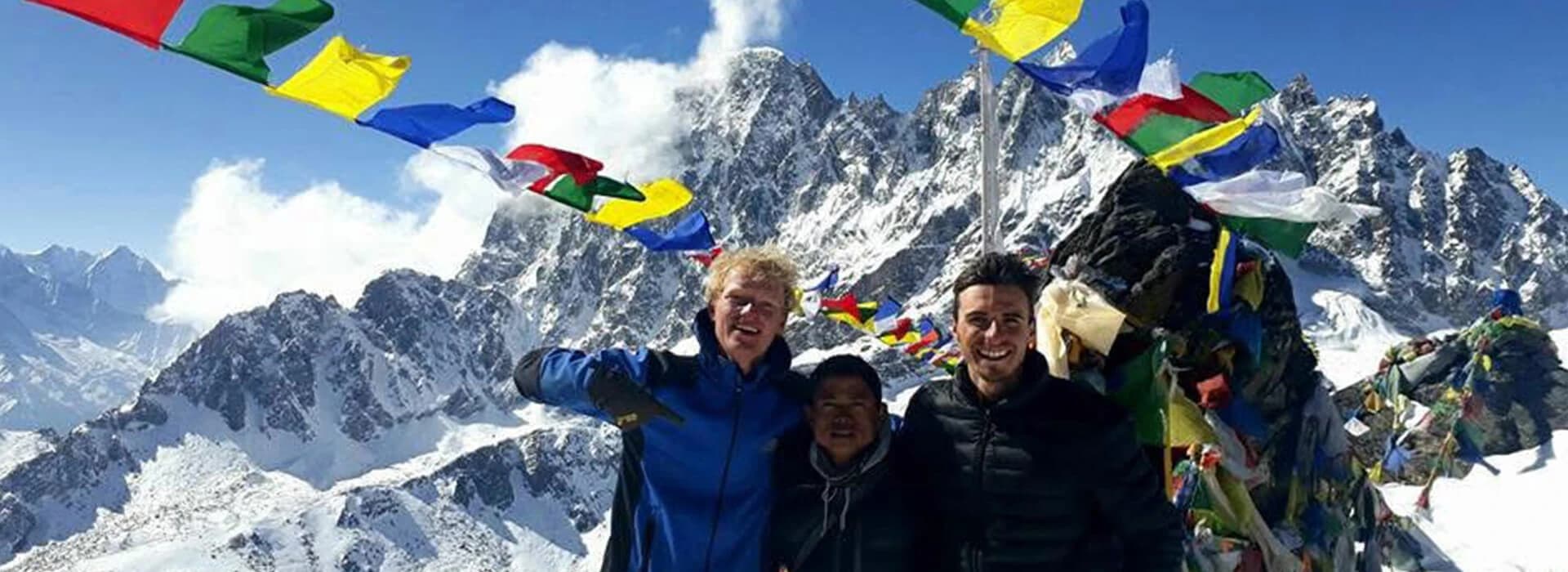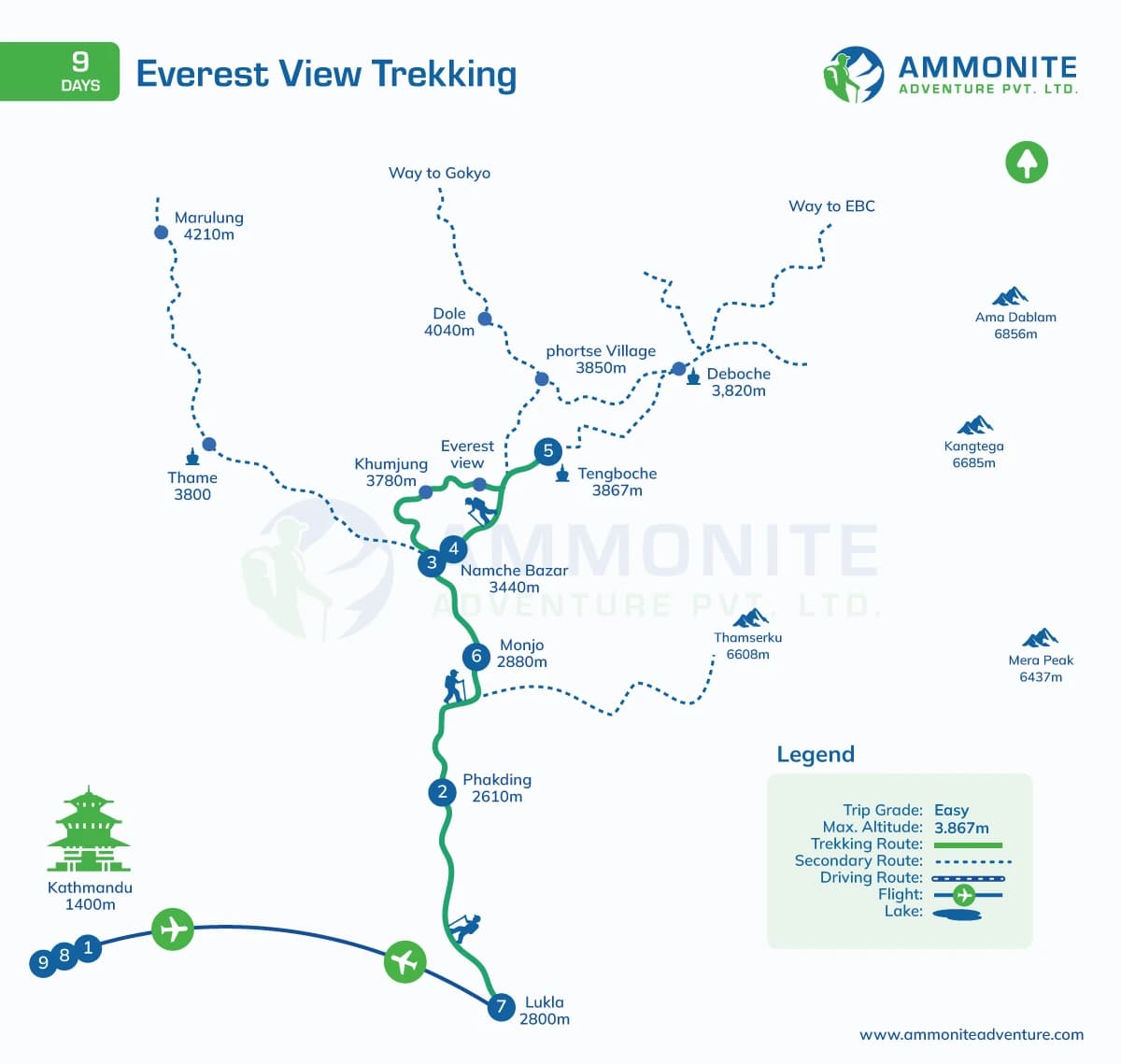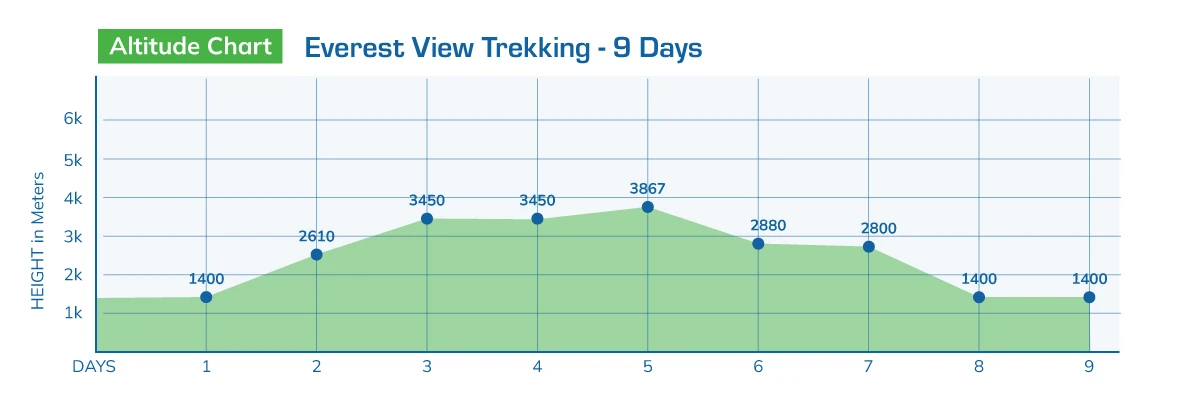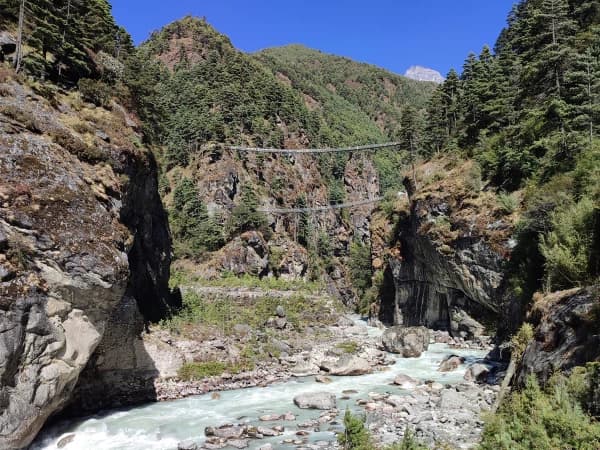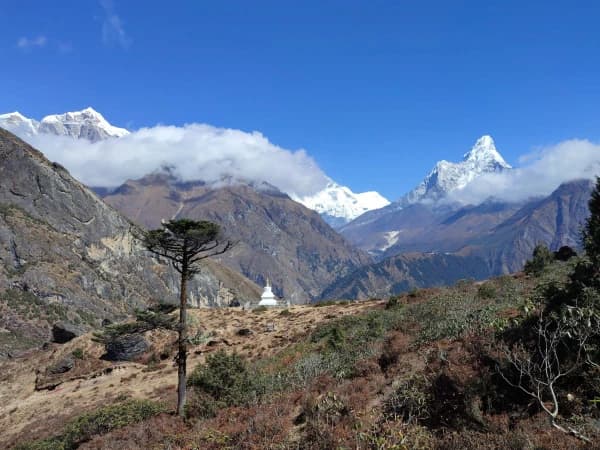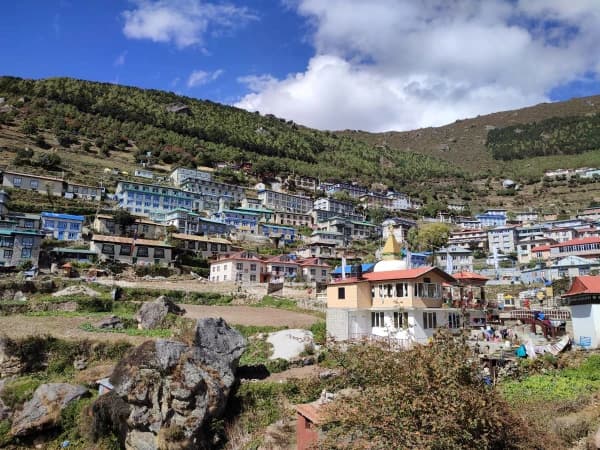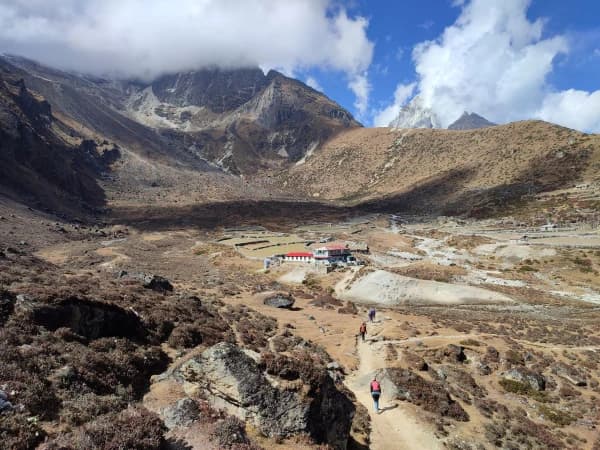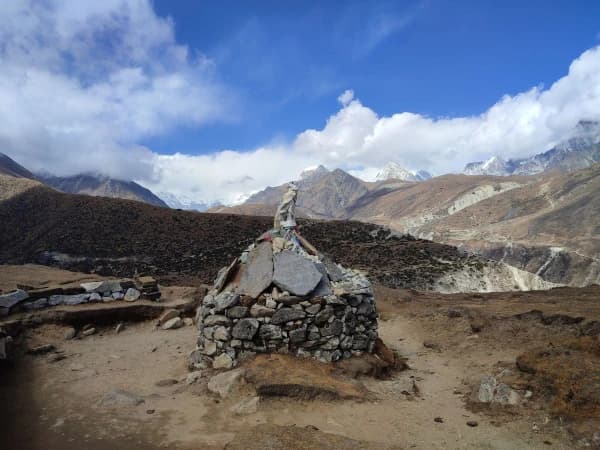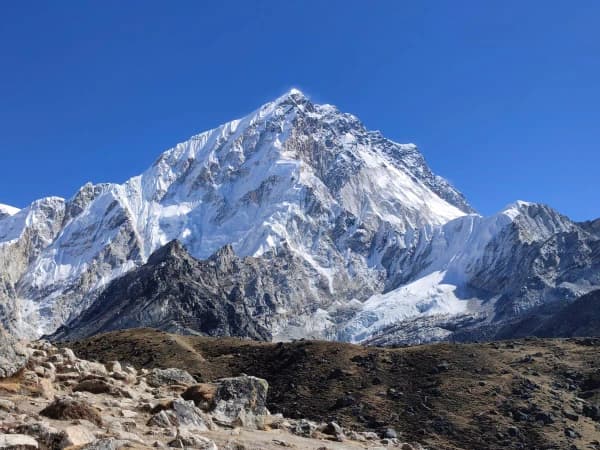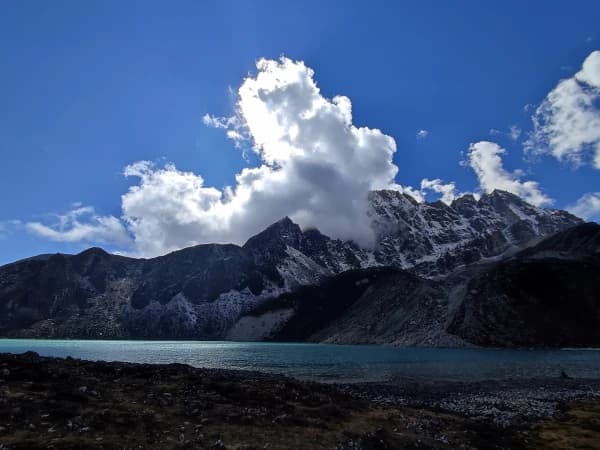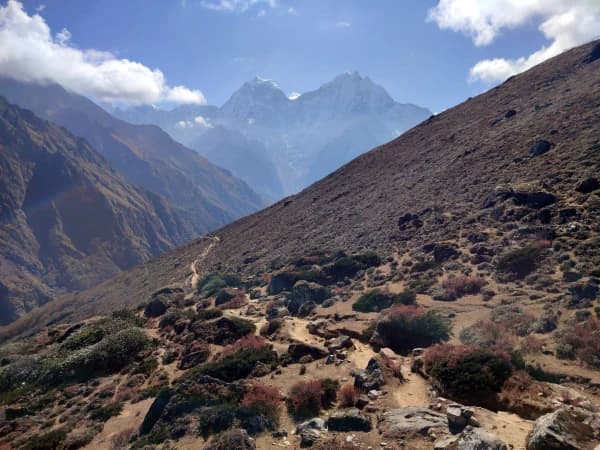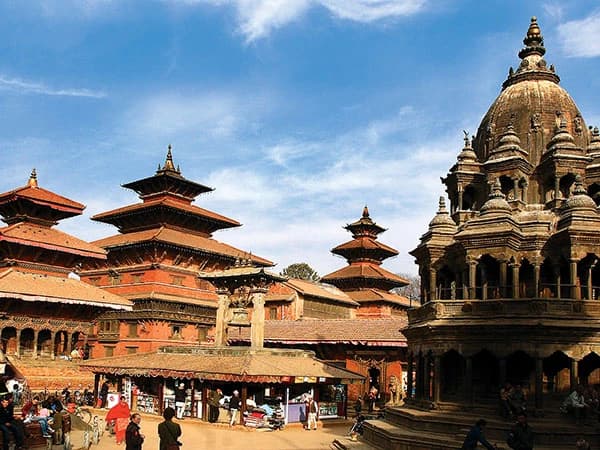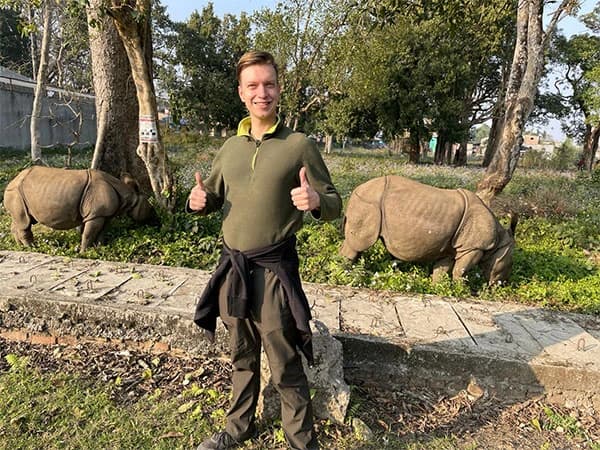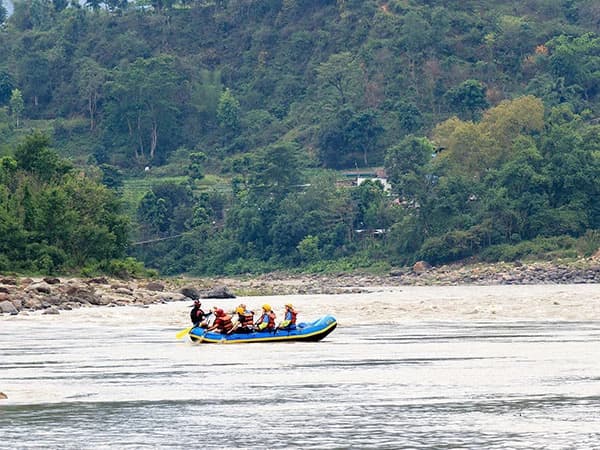The Everest View Trekking is a captivating short 9-day adventures journey through the heart of the Solukhumbu district, Khumbu region of Nepal, noted for its unique cultural and natural attractions brought in by the circuit of the highest peak in the world, Mt. Everest (8,848 m). This 9-day trip is one of the best alternatives to connect to the true essence of the Everest region at low risk of acute mountain sickness (AMS) or altitude sickness.
Often, it is also referred to as the Tengboche Everest View Trek, offering the everlasting vistas of some of the tallest snow-capped peaks on earth, such as Lhotse, Ama Dablam, Cho Oyu, and others, including the highest point on the planet, Mt. Everest (8,848 m). This Everest View Trek is an ideal option for those with a limited amount of time or those who do not prefer a longer-day expedition reaching the Everest Base Camp, giving trekkers and travelers an immediate immersion in the stunning natural beauty and harmonious Sherpa culture of the region.
The trekking route to Tengboche in the Everest region meanders through charming villages, dense rhododendron forests, sparse alpine meadows, and numerous thrilling hanging bridges draped with colorful prayer flags, gradually ascending to the largest monastery in the Everest region, Tengboche, in less than two weeks.
The spiritual hub, perched at 3,867 m, provides unparalleled panoramic views of the surrounding snow-capped Himalayas; hence, the journey to view Everest from the Tengboche monastery is one of the greatest ways to experience everything Everest has to offer, including the Lukla Airport, Namche Bazaar, Tengboche Monastery, and the Hotel Everest View Hotel, excluding the marking of the footprints at base camp from the classic odyssey.
Therefore, the Tengbcohe Everest View Trekking is a suitable holiday for every adventure lover with an average fitness level rambling for 5–6 hours each day, passing through alpine forests, amusing valleys, and the majority of the attractions of the Everest trekking region along the glacier-fed rivers of Dudh Koshi and Bhote for a wholesome Himalayan experience, whether you are a nature lover, photography enthusiast, family trekker, or extraordinary mountain climber.
Trek Highlights
- A thrilling 35-minute flight over to the gateway of the Everest trekking region, Lukla.
- Epic glimpses of Mt. Everest, Nuptse, Lhotse, Ama Dablam, and Thamserku in less than a week of trekking.
- Explore the culturally, historically, and naturally rich mountain towns of the Sherpa people, Namche Bazaar, Lukla, and Monjo.
- Embark through the Sagarmatha National Park, with its extraordinary dramatic landscape of mountains, glaciers, and deep river valleys.
- Golden opportunity to spot exotic Himalayan wildlife such as musk deer, Himalayan Gaint Tahr, snow leopard, and bear.
- Walk along the premises of the largest monastery in the Everest Trekking region, Tengboche Monastery, to seek blessings from the Buddhist Gurus, Lamas, and Monks.
- Connect to the unspoiled culture, tradition, and lifestyles of the Sherpa people.
- Catch an early sunrise and sunset over the Himalayas from Tengboche and many more.
What can you anticipate at Everest View Trekking?
Located in northeastern Nepal within the Khumbu region, Everest View Hiking offers an amazing amalgamation of adventure, culture, and raw Himalayan beauty dominated by the stunning sights of Everest, Lhotse, and Ama Dablam under the Sagarmatha National Park Area, a natural UNESCO World Heritage Site, while the Tengboche monastery serves as an ultimate destination.
Although the Everest View Trekking is a golden opportunity for trekkers to explore and discover the cultural and natural beauty of the region without the commitment of a longer, more strenuous hike, visitors, hikers, or travelers can anticipate amazingly daredevils flights to Lukla, ascending through lush rhododendron, oak, and pine forests, crossing scenic suspension bridges, and more while resting for the nights at various tea houses along the way.
The major highlights of this short expedition to the Everest region include strolling around the hustling and bustling Sherpa town, Namche Bazar, the religious Tengboche Monastery, and traditional Sherpa towns following the river shore of the Bhote Khosi in initial days, and Dudh Koshi later on flowing directly from the melting of ice that also gives life to the vast variety of flora and fauna protected by the national park area as described below:
An adrenaline-rushing flight to Lukla
Like most of the Himalayan journeys to the Everest region, such as the Gokyo Lake Trekking, Everest Base Camp Tour, or Cho La Pass Everest Base Camp Odyssey, the Everest View Trekking also begins with a scenic flight to Lukla Airport, officially known as Tenzing-Hillary Airport, at an altitude of 2,860 m (9,383 ft).
Serving as the primary gateway for trekkers and climbers heading to Mt. Everest for various purposes, be it conquering the base camp, the summit itself, or simply circumnavigating the Everest encompassment, Lukla is renowned for being one of the most challenging airports in the world, featuring a single, short runway stretching only 527 m (1,729 ft) with a dramatic incline.
It will be adrenaline-rushing to board a small twin-engine aircraft landing at the Lukla airport during the Everest View Trek as you ascend over the lush valleys and snow-capped peaks filled with Himalayan scenery. The real thrill comes as the aircraft approaches the short, steep runway, creating an exhilarating sense of survival.
Various perspectives at the top of the world, Mt. Everest (8,848m) from Tengboche Monastery
The main focal point of the Everest View Trekking is the Tengboche Monastery itself, a significant cultural and spiritual center of Buddhists in the region nestled amidst the towering mountain ranges at an altitude of 3,867 m that has outstanding views of Mt. Everest, an awe-inspiring sight to have witnessed.
Although the panoramic vista watches over the whole journey, the monastery captures the most striking majesty of Everest along with its neighboring peaks like Lhotse, Nuptse, and lovely Ama Dablam, especially when these peaks bathe in a golden glow in the serene and spiritual dimension of the breathtaking landscape to enjoy at its fullest during the nine days of Everest View trekking.
The alpine tour to Tengboche hence definitely adds to the profound feelings of tranquility and connection to the natural and spiritual world to cherish by every trekker and pilgrim alike, evoking a transformative journey of a lifetime.
The natural haven, the Sagarmatha National Park
During the Everest View trek, the route to the destination goes through Sagarmatha National Park, one of the UNESCO World Heritage Sites characterized for its pristine environment, dramatic landscapes, and diverse ecosystems, home to the iconic Mt. Everest, covering an area of 1,148 square kilometers.
The national park features some of the most astonishingly rugged terrains, with deep gorges, glacial valleys, towering peaks, cascading waterfalls, streams, and rivers rich in a wide array of flora and fauna, including endangered species like the snow leopard, red panda, Himalayan tahr, and others, which also boast unique alpine and subalpine herbs, shrubs, and trees.
Further, established in 1976, Sagarmatha National Park is not only a wildlife sanctuary but also a cultural center inhabited by the worldwide cherished people and their centuries-old culture, customs, and traditions, offering a spiritual retreat, cultural insight, and majestic natural beauty like never before, even during the short trek to the Everest region called Everest View Trekking.
The capital city of the Sherpa people, Namche Bazaar
Namche Bazar is the main trading and administrative hub of the Everest region, the heartland of Sherpa people to stop for and take much-needed rest, at least spending two nights at an altitude of 3,400 m, serving as the central point for any sort of adventure in the Upper Khumbu with several eateries, bars, shops, ATMs, and banks even for the Everest View Trekking.
Usually, the town is characterized by its terraced landscape, traditional Sherpa architecture, and vibrant marketplace facing towards the alluring Kawangde Ri and Thamserku, which possess the historical Sherpa Culture Museum along with other modern amenities blending well with the charm of Sherpa hospitality with the necessities for adventurers in the Himalayas, a must to explore the town for sure!
The best ideal Himalayan trek for everyone, anytime
The trekking trail to Tengboche monastery to view Everest from various perspectives is usually well maintained, facilitating a number of tea houses and local lodges opened and managed by the locals from the area relatively in the lower altitudes, minimizing the potential for altitude sickness.
Therefore, the Everest View Trekking is accessible year-round as one of the moderately difficult Himalayan jauntings, making it a perfect destination for trekkers of variable fitness levels, experiences, and age groups. Nonetheless is not only a visual feast being treated to the panoramic sight of the Everest and other mythical peaks but also a cultural journey, allowing trekkers to immerse themselves in the rich traditions and warm hospitality of the Sherpa people.
The Best 9 Day itinerary and trekking route for the Everest View Hike
The adventure to the Everest view Trek begins in Kathmandu, followed by an incredible flight to Lukla, winding through the verdant hills and forests, typical mountain dwellings, and rhododendron-filled valleys, simultaneously ascending to the historic Tengboche monastery from Phakding and Namche Bazar.
The trek progresses with the retreating unmatchable views of Everest, Lhotse, Ama Dablam, and other sky-perching Himalayan giants crafting a memorable backdrop for this Himalayan adventure that retarces the route onwards Tengboche to return to Kathmandu valley.
This 9-day itinerary and route by Ammonite Adventure is customizable to cater to the various needs, preferences, and fitness levels of trekkers and is considered the best trail for the Everest View voyage, even for the years 2024 and 2026, promising mind-blowing scenery, enriching culture, and a Himalayan experience to remember for a lifetime.
Everest View Trekking Cost
Several factors can influence the cost of the Everest View Trek, including the group size, season, itinerary, the level of service chosen, and the type of operator you are trekking with, such as local, national, or international.
Typically, locally based trekking and traveling agencies such as Ammonite Adventure also provide international services that can range from USD 1,200 to USD 1,500 per person. Contact us for amazing budgeted luxury trekking packages in the Himalayas of Nepal all year 24/7, including those to the Helambu, Kanchenjunga Trekking, Kanchenjunga North, Kanchenjunga South Trek, and others.

